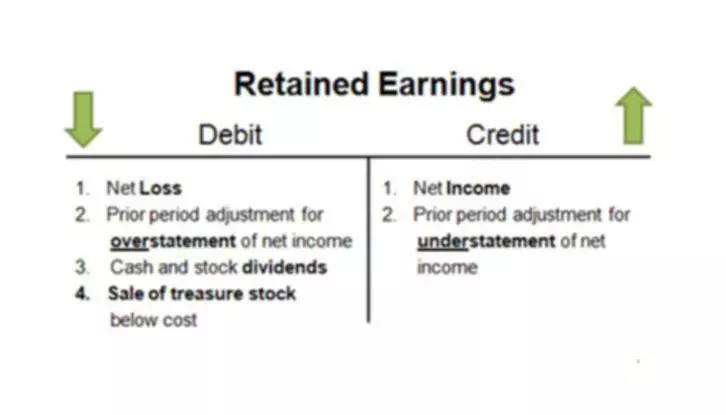Content
- What is the Straight Line Depreciation Method?
- Straight Line Depreciation Definition
- How To Avoid Tax Penalties – A Simple Guide
- Step 3: Determine the useful life of the asset
- Step 4: Divide 1 by the number of years of useful life to determine annual depreciation rate
- Join over 140,000 fellow entrepreneurs who receive expert advice for their small business finances

Accumulated depreciation is the cumulative depreciation of an asset up to a single point in its life. Investopedia requires writers to use primary sources to support their work. These include white papers, government data, original reporting, and interviews with industry experts. We also reference original research from other reputable publishers where appropriate.
Small and large businesses widely use straight line depreciation for its simplicity, accuracy, and functionality, but other methods of calculating an asset’s depreciation value exist. With straight line depreciation, the value of an asset is reduced consistently over each period until the salvage value is reached.
What is the Straight Line Depreciation Method?
Working out the straight line depreciation of your assets is not only simple but it also provides your business with more certainty in relation to financial reporting. Consider using a straight line depreciation calculator if you want a quick way to find out what is straight line depreciation how much your assets will depreciate on an annual basis. When the equipment is at the end of its useful life, its carrying value will be $2,000. If you sell the equipment for more than the salvage value, you have to record a profit in the income statement.
How to Record a Depreciation Journal Entry: Step By Step – The Motley Fool
How to Record a Depreciation Journal Entry: Step By Step.
Posted: Fri, 05 Aug 2022 07:00:00 GMT [source]
By dividing the difference between an asset’s cost and its expected salvage value by the number of years the asset is expected to be used, the asset owner can get the amount of the depreciation each year. The straight line method of depreciation is the simplest method of depreciation. Using this method, the cost of a tangible asset is expensed by equal amounts each period over its useful life. The idea is that the value of the assets declines at a constant rate over its useful life.
Straight Line Depreciation Definition
In accounting, there are many differentconventionsthat are designed to match sales and expenses to the period in which they are incurred. One convention that companies embrace is referred to asdepreciation and amortization. It measures the units of production instead of measuring them in dollars.
In setting up your small business accounting system, knowing your depreciation methods can help you choose the right method that matches the pattern of usage of your fixed assets. The straight line depreciation method gives you a realistic picture of your business’s profit margin using long-term assets. Straight line depreciation can be calculated on assets such as manufacturing equipment, vehicles, office furniture, computers, and office buildings. These types of assets are known as long-term assets as they are essential to operating your business on a day-to-day basis and lasts for more than one year. When you divide the costs of these assets, you are able to have a full view of your profit margins. The straight line depreciation method is useful because, instead of taking a hit in your accounting early on and then seeing exaggerated profits, your profits and expenses are evened out at an equal pace.
How To Avoid Tax Penalties – A Simple Guide
Here’s how you can use gross profit, and the gross profit margin, to measure your business’s production efficiency. Straight-line depreciation deducts the same amount of https://www.bookstime.com/ depreciation each year over the entire useful life of the asset. It gets its name from the theoretical graph of the asset’s value over time; it has a constant slope.
This method would be used if calculating things such as the mileage of a vehicle or pages printed from a printer. This equipment type loses value based on the amount it is used instead of the years it has been in service.
To calculate the depreciation, subtract the scrap value from the purchase price and, instead of dividing by the years of life, multiply by the number of units produced. Then, you divide by the number of units expected for its lifespan. This unit-of-production method works best when used with assets that are rated by the number of specific items they produce and not the amount of time they are used. When calculating a business’s contra account, bad debts, depletion and depreciation of the company’s assets are all crucial deductions to make. In order to write off the cost of expensive purchases and calculate your taxes accurately, knowing how to determine the depreciation of your company’s fixed asset is critical.
- The estimated salvage value of the machine is $500 and the utility period is five years.
- The declining balance method calculates more depreciation expense initially, and uses a percentage of the asset’s current book value, as opposed to its initial cost.
- Straight-line depreciation can be recorded as a debit to the depreciation expense account.
- Regardless of the depreciation method used, the total depreciation expense recognized over the life of any asset will be equal.
- Investopedia requires writers to use primary sources to support their work.
Operating expenditures are the smaller expenses that need to be incurred simply to run a business on a daily basis. For example, operating expenditures may include things like building rent, utility bills, wages and salaries, taxes, or travel expenses. Operating expenditures usually make up the majority of the company’s ongoing spending. Depreciation is important because businesses can use this system to spread out the investments of long-term assets over the course of many years for accounting and tax benefits. As the value of an asset decreases over the years due to wear and tear, the amount shown on an accounting balance sheet will affect annual income. The depreciation rate is the rate an asset is depreciated each period. To calculate the depreciation rate, divide the depreciation expense by the depreciable base.
A company may elect to use one depreciation method over another in order to gain tax or cash flow advantages. The straight line depreciation is calculated using the asset’s total purchase price, the scrap value, and the useful life, or the number of years it’s estimated to last. You simply subtract the scrap value from the total purchase price and divide that total by the useful life amount to reach the annual depreciation for the asset.


Recent Comments